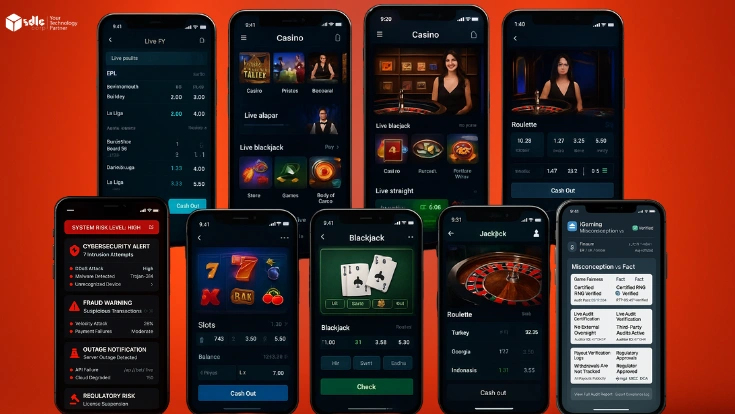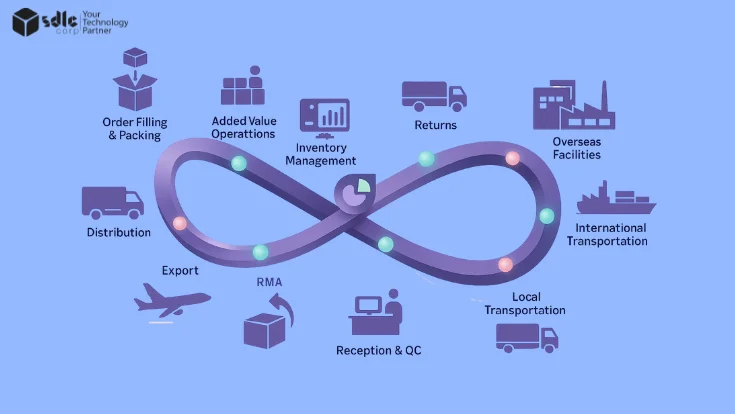Introduction
The metaverse is revolutionizing the gaming industry, creating expansive virtual worlds where players can engage in social interactions, economic activities, and creative expression. One of the most significant aspects of this evolution is the rise of user-generated content (UGC). In the metaverse, players are no longer just participants in pre-designed environments—they are creators, shaping the virtual worlds around them.
User-generated content allows players to design their own avatars, craft virtual items, build environments, and even develop new gameplay experiences. This dynamic not only enhances player engagement but also introduces new opportunities for monetization, collaboration, and community-building. In this blog, we will explore the role of user-generated content in metaverse games and how Metaverse Game Development services are enabling this player-driven creativity.
We will also look at the implications of Blockchain Game Development, AI, and NFTs in empowering users to own and trade their creations, ensuring the metaverse becomes a truly player-centric space.
The Evolution of User-Generated Content in Gaming
User-generated content has existed in gaming for decades, from modding communities in games like Minecraft to custom maps in Counter-Strike. However, the metaverse is taking this concept to an entirely new level. Unlike traditional games where player-created content is often a side feature, metaverse platforms place user creativity at the forefront.
In games such as Roblox, The Sandbox, and Decentraland, user-generated content forms the foundation of the experience. Players can create everything from virtual houses and cities to interactive games within these virtual worlds. This level of creative freedom is made possible by the advanced tools and services offered by Metaverse Game Development Companies. These companies provide the infrastructure for users to generate their own content without needing extensive programming skills.
In metaverse games, the line between developer and player is blurred. Users are given the freedom to design, build, and monetize their creations, making the gaming experience much more collaborative and community-driven.
Transform Your Gaming Experience Today!
A Metaverse Game Development Company specializes in creating immersive and engaging metaverse games for online and offline platforms.

Empowering Players to Become Creators
One of the defining features of the metaverse is that it empowers players to become creators. The tools provided by Metaverse Game Development Services allow players to build and shape the world around them in ways that were previously unimaginable. Whether it’s designing a new virtual landscape, creating a custom avatar, or developing a mini-game within a larger platform, players are given unprecedented freedom to express their creativity.
For example, The Sandbox provides players with tools to create voxel-based assets and experiences. Users can design everything from simple items to complex, interactive environments. These creations can then be shared, sold, or traded with other players, creating a dynamic in-game economy. This level of creative freedom fosters a sense of ownership and pride among players, making the metaverse a place where people want to spend more time and engage more deeply.
The ability to monetize creations through marketplaces is another crucial aspect of UGC in metaverse games. Players who create popular virtual items or experiences can earn real-world income, transforming gaming from a hobby into a potential career. This has led to the rise of virtual entrepreneurs who build and sell in-game assets, creating a thriving economy within the metaverse.
The Role of Blockchain in User-Generated Content
One of the most significant developments that supports user-generated content in the metaverse is the integration of blockchain technology. Blockchain Game Development has enabled a new level of ownership and authenticity for virtual assets. In traditional gaming environments, players may create content, but they don’t have actual ownership over their creations. These assets are typically stored on centralized servers controlled by the game developer, limiting the player’s ability to sell or transfer their creations.
With blockchain, this dynamic changes completely. Players who create virtual items in the metaverse can mint them as Non-Fungible Tokens (NFTs), which are stored on the blockchain. This ensures that the player has true ownership of their creations and can sell or trade them on decentralized marketplaces. The introduction of NFTs in metaverse games means that user-generated content can have real-world value, and players can profit from their creativity.
For example, in Decentraland, users can purchase virtual land plots using cryptocurrency, build on that land, and then sell or rent their creations. The blockchain ensures that each asset is unique, secure, and tradable, making it easier for creators to monetize their work.
Additionally, blockchain’s decentralized nature provides an added layer of security for user-generated content. By removing the central authority that controls virtual assets, blockchain ensures that players retain full control over their creations, even if the platform they are using changes or shuts down.
AI and Automation in UGC Creation
The integration of artificial intelligence is another key factor in the growth of user-generated content within the metaverse. AI is being used to simplify the content creation process, making it easier for users to design complex items or environments without the need for advanced technical skills. Through AI development Services, metaverse platforms can offer tools that automate certain aspects of content creation, such as generating 3D models, optimizing game mechanics, or enhancing graphical elements.
For instance, AI can help users generate entire virtual landscapes based on simple input parameters. If a player wants to create a forest environment, they can input a few details such as terrain type, climate, and vegetation density, and the AI will automatically generate a forest that fits their specifications. This automation significantly lowers the barrier to entry for content creators, allowing more players to contribute to the virtual ecosystem.
Moreover, AI can be used to optimize and personalize the content creation experience. By analyzing player preferences and behavior, AI can offer suggestions or improvements, making it easier for users to refine their creations. For example, an AI tool may recommend color schemes, object placements, or even gameplay mechanics based on successful designs within the metaverse. This helps elevate the quality of user-generated content while maintaining creative freedom for the player.
Level Up Your Metaverse Game! Get Expert Development Services Now!
At SDLC Corp, we create immersive metaverse games that engage players on any platform.

Fostering Communities Through UGC
User-generated content is not just about individual creativity—it also plays a vital role in fostering communities within the metaverse. Players who create content often share it with others, leading to the formation of groups and communities around specific interests or themes. These communities help drive engagement within the metaverse and create a collaborative atmosphere where users can learn from and support one another.
Metaverse games such as Roblox have shown how player-created content can lead to thriving communities. Players not only create their own games but also collaborate with others, share feedback, and participate in community-driven events. This collaborative spirit is essential for the long-term success of metaverse platforms, as it fosters a sense of belonging and collective ownership.
The community-driven nature of UGC also presents opportunities for Game Development Companies to support player initiatives. Developers can provide tools, resources, and incentives for players to continue creating and contributing to the platform. For example, hosting design competitions, offering rewards for popular creations, or featuring user-generated content in official game events can help drive further engagement and content production.
Monetization and Economic Opportunities
The ability to monetize user-generated content has transformed the gaming industry, allowing players to become virtual entrepreneurs. In the metaverse, users can create and sell virtual assets, such as clothing for avatars, virtual real estate, custom game mechanics, and more. This has led to the development of a vibrant economy where players can earn real-world income from their digital creations.
NFT Game Development has played a significant role in this economic transformation. By turning user-generated content into NFTs, players can sell their assets on decentralized marketplaces, where the value of each item is determined by demand. For example, a rare piece of virtual clothing or a unique avatar design may sell for significant amounts of cryptocurrency, providing financial incentives for players to create high-quality content.
In addition to selling assets, players can also monetize their creations by offering them as part of subscription services or in-game purchases. Game Development Services often provide support for microtransactions, allowing creators to charge small fees for access to custom-built environments, skins, or gameplay enhancements. This creates an additional revenue stream for players, further incentivizing them to continue contributing to the metaverse.
Challenges in Managing User-Generated Content
While the rise of user-generated content presents exciting opportunities, it also brings its own set of challenges. One of the main concerns for Metaverse Game Development Companies is ensuring that user-generated content adheres to community guidelines and maintains quality standards. Without proper moderation, the metaverse could become flooded with low-quality or inappropriate content, which could negatively impact the overall user experience.
To address these challenges, developers are implementing moderation systems that use both human oversight and AI to filter content. AI-driven moderation tools can automatically detect and flag inappropriate content, while human moderators can review submissions to ensure that they meet the platform’s standards. However, striking a balance between creative freedom and quality control is a continuous challenge.
Another challenge is intellectual property (IP) protection. With so many players creating and sharing content, it can be difficult to verify the originality of each creation. Developers must implement systems that protect both the creators and the platform from potential IP infringement disputes. This may involve building transparent copyright systems where content creators can register their designs and receive proper attribution or compensation for their work.
The Future of User-Generated Content in the Metaverse
The future of user-generated content in the metaverse is incredibly promising. As more platforms adopt blockchain, AI, and advanced content creation tools, we can expect to see even more players contributing to these virtual worlds. The rise of decentralized economies and NFT marketplaces will continue to provide financial incentives for creators, making the metaverse an attractive space for both gamers and entrepreneurs.
Moreover, the community-driven nature of UGC will play an essential role in shaping the metaverse’s future. As players collaborate and build upon each other’s work, we will see more diverse and creative virtual experiences emerge. Metaverse Game Development Companies will need to continue providing the tools, resources, and support necessary to foster this creativity and ensure that the metaverse remains a space where everyone can participate and thrive.
Explore our affordable Metaverse game development services
We design innovative metaverse games at SDLC Corp that redefine immersive experiences across platforms. Partner with us to craft something truly unforgettable.

Conclusion:
User-generated content is at the heart of the metaverse experience, transforming how players engage with games and virtual worlds. By empowering players to create, share, and monetize their content, Metaverse Game Development is helping to build a dynamic, player-driven ecosystem that fosters creativity, collaboration, and innovation.
With the integration of Blockchain Game Development, AI, and NFTs, the future of user-generated content in the metaverse is bright. Players can own their creations, build communities, and even turn their creativity into a source of income. As the metaverse continues to evolve, user-generated content will remain a central pillar, driving engagement, collaboration, and economic growth within these virtual worlds.

















